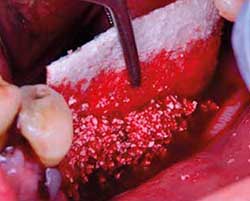Articles
Vol. 14 No. 1 (2022)
Comparison of two pre-prosthetic surgical techniques for augmentation of mandibular vertical ridge defects

Publisher's note
All claims expressed in this article are solely those of the authors and do not necessarily represent those of their affiliated organizations, or those of the publisher, the editors and the reviewers. Any product that may be evaluated in this article or claim that may be made by its manufacturer is not guaranteed or endorsed by the publisher.
All claims expressed in this article are solely those of the authors and do not necessarily represent those of their affiliated organizations, or those of the publisher, the editors and the reviewers. Any product that may be evaluated in this article or claim that may be made by its manufacturer is not guaranteed or endorsed by the publisher.
Received: 5 May 2021
Accepted: 15 June 2021
Accepted: 15 June 2021
746
Views
618
Downloads












